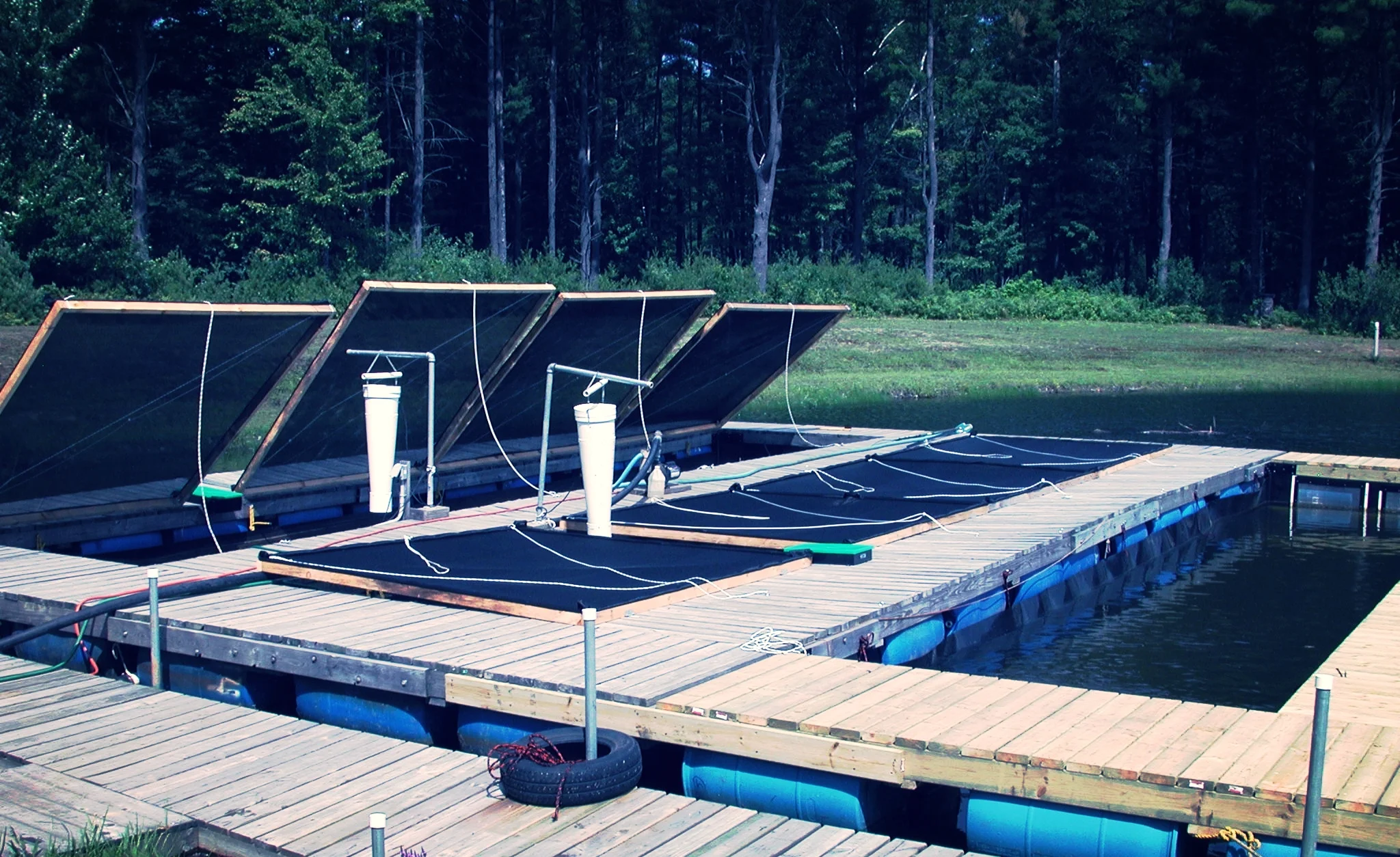Research Report #1 (2004-2006):
Source: State of Wisconsin Department of Agriculture, Trade and Consumer Protection Grant Project Final Report, Contract Number 18013, Submitted June 2004.
Project Director: Christopher Hartleb, Ph.D.
Chairman, U.W.-Stevens Point Dept. of Aquaculture
Director, Wis. Northern Aquaculture Demonstration Center
The results of this study have been presented at/included in:
- World Aquaculture Conference (February, 2004)
- Aquaculture Magazine (Jan/Feb 2004)
- American Fisheries Society Annual Meeting (August 2004)
- An additional Wis. ADD Grant (with similar findings, 2006)
- Best Management Practices for Aquaculture in Wisconsin.
(Excerpt from above report)
“Water quality parameters showed little variation within the raceway and between the raceway and reservoir. Total suspended solids, pH, hardness and alkalinity showed no significant difference (P > 0.05) among the inflow, mid-raceway, outflow and reservoir. TSS averaged 0.0048 mg/L in the reservoir and 0.0053 mg/L in the raceway; pH ranged from 6.8–7.3 at all sites during the study; hardness and alkalinity averaged 171 mg/L and 67 mg/L at all sites throughout the study, respectively. Secchi depth was not significantly different (P > 0.05) among the four sampling locations, but was consistently lower at the mid-raceway site (1.1 m), when compared to the average of the other three locations (1.3 m). The automatic feeder and belt feeder for each raceway was located close to the mid-raceway sampling location; the release of feed and yellow perch activity at this location most likely contributed to the decreased visibility. Likewise, the turbidity showed no significant difference (P > 0.05) among the four sampling locations, but was consistently higher at the mid-raceway sampling location (mid-raceway 5.1 NTU, with an average of 4.4 NTU for the other three sampling locations). The feeder location and fish activity most likely contributed to this slight difference as well. Temperature in the reservoir showed isothermal conditions with respect to depth (max. depth 23 ft (7 m)) throughout the study and averaged 72° F (22.4° C) in July, 75° F (24° C) in August, 63° F (17.4° C) in September, and 55° F (12.9° C) in October.
Dissolved oxygen showed no significant difference (P > 0.05) between inflow and mid-raceway and between outflow and reservoir, but DO was significantly different (P < 0.05) between those two groups of locations. The outflow and reservoir DO averaged 9.5 ppm for most of the summer, but the inflow and mid-raceway averaged 8 ppm, with DO decreasing to 5-6 ppm in late July to mid-August. This coincided with the warmest water temperatures and, during this period, the yellow perch often were seen crowding the front of the raceway near the intake pipes where higher DO and slightly lower temperatures occurred.
Crowding increased the oxygen demand per volume of water and decreased the DO in the front half of the raceway. Airstones lined the raceway and reoxygenated the water near the outflow, yet slightly warmer temperatures deterred most of the perch from occupying the discharge end of the raceways.
Nitrogen and phosphorus were monitored during the study to model the exchange of nutrients between the raceway and reservoir. There was no significant difference in the concentration of ammonia-nitrogen (NH3-N), nitrite-nitrogen (NO2-N) and nitrate-nitrogen (NO3-N) between the reservoir and three raceway locations for most of the growing season. Significantly higher (P < 0.05) levels of ammonia-nitrogen and nitrite-nitrogen were found in the reservoir the week of September 4. Significantly higher levels (P < 0.05) of nitrate-nitrogen were found in the reservoir the week of July 24 and in the inflow water the week of August 8. At no time did the ammonia, nitrite and nitrate concentrations exceed the tolerance limit for yellow perch. Though the levels of these compounds were slightly higher at these dates and locations, there was no clear explanation for the increase and it did not appear to affect the growth and survival of the yellow perch.”





